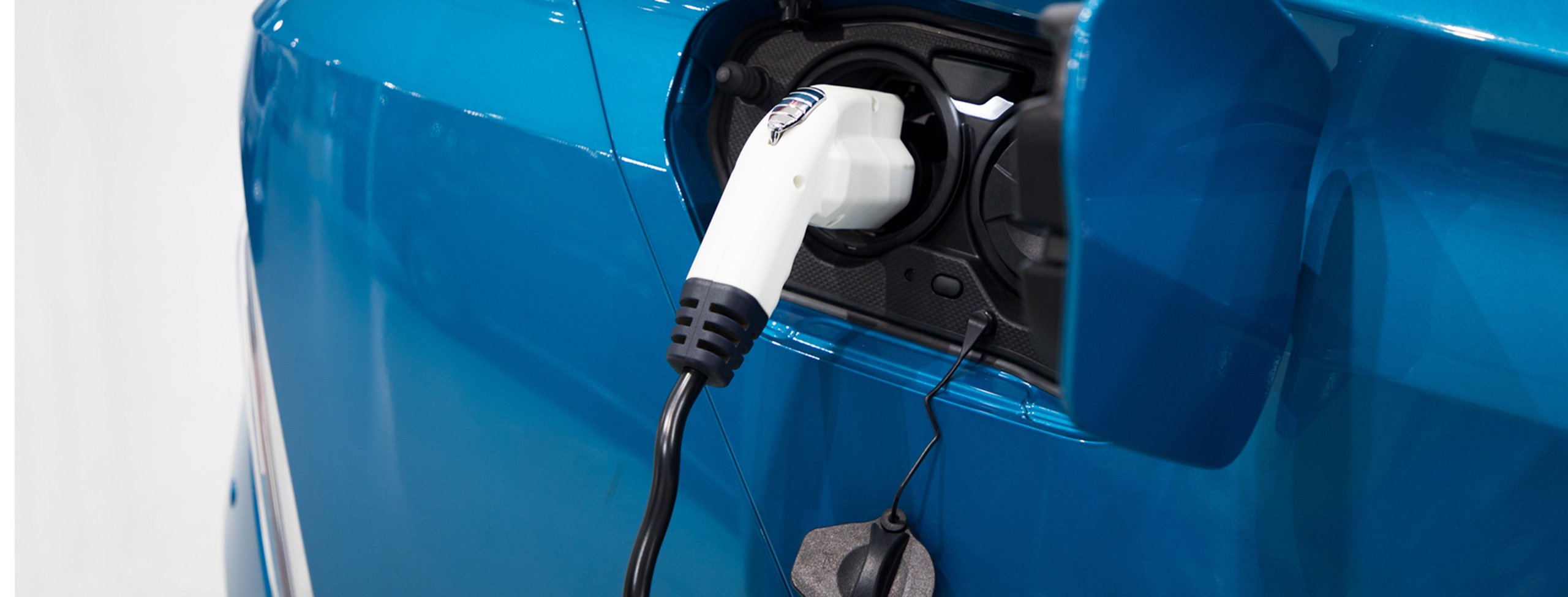
8 June 2023 • 14 minute read
NHTSA seeks improved pedestrian safety protection through changes to safety ratings and AEB mandate
Recent actions by the National Highway Traffic Safety Administration (NHTSA) seek to reduce pedestrian injuries and fatalities resulting from collisions with light duty vehicles (cars, SUVs, vans, and pickup trucks), which have been increasing rapidly in the US. On May 25, 2023, NHTSA proposed to introduce pedestrian crash protection ratings into the Agency’s New Car Assessment Program (NCAP). Less than a week later, on May 31, 2023, the Agency announced a proposed regulation (NPRM) that would mandate that all new light vehicles manufactured for sale in the US be equipped with automatic emergency braking (AEB). The proposed Federal Motor Vehicle Safety Standard (FMVSS), which has not yet been published in the Federal Register, is designed to reduce the occurrence of vehicle-pedestrian crashes and to further reduce vehicle rear-end collisions.
The proposals align with the Biden Administration’s other efforts to increase pedestrian and cyclist safety, including the Infrastructure Investment and Jobs Act’s (IIJA) $5 billion Safe Streets and Roads for All program, which provides grants to assist state and local efforts to reduce roadway deaths, and the Department of Transportation’s National Roadway Safety Strategy (issued in 2022).
Safety advocates, along with a number of policymakers, contend that inclusion of pedestrian safety in federal safety standards and ratings is overdue. Some also view the proposed changes as too incremental or otherwise insufficient to protect pedestrians and other vulnerable road users. Nonetheless, the proposed changes would be a significant initial step aimed at encouraging the US auto industry to deploy vehicle safety technologies that reduce the risk of vehicle collisions with pedestrians and mitigate harm to pedestrians in the event of such collisions.
Interested parties may submit comments and responses to the Agency’s questions in the NCAP request for comment (RFC) until July 25, 2023, and for 60 days after the AEB Notice of Proposed Rulemaking (NPRM) is published in the Federal Register.
NCAP request for comments
Overview and history
The NCAP is a supplemental, voluntary vehicle safety program administered by NHTSA. NCAP ratings are included in the Monroney label (the window sticker required on all new vehicles offered for sale in the US) to provide consumers with information regarding the safety performance of new vehicle models across several criteria, including frontal and side crash measures as well as vehicle rollover resistance. NHTSA evaluates the results of these tests and assigns each tested model safety ratings of 0 to 5 stars for those criteria as well as overall vehicle safety.
NHTSA created the world’s first NCAP in 1978. In the ensuing four-plus decades, NCAP has encouraged vehicle manufacturers to develop and implement safer vehicle designs and equipment. Other nations and regions have adopted their own NCAP systems based on the US NCAP model. Safety improvements spurred in part by NCAP ratings have generated significant positive vehicle safety benefits in the US. This includes contributing to a reduction in motor vehicle crash fatalities (51,093 deaths in 1979 compared to 32,744 in 2014 before increasing to an estimated 42,795 fatalities in 2022) and cutting the rate of motor vehicle fatalities per 100 million vehicle miles by nearly 60 percent (in 1979, there were 3.34 deaths per 100 million vehicle miles travelled, in 2021 the rate dropped to 1.37 per 100 million VMT).
Calls to update NCAP
While traffic fatality rates have declined dramatically since 1978, many believe existing NCAP standards are outdated. Critics argue that the ratings no longer incentivize manufacturers to make further vehicle safety improvements and do not provide meaningful information to allow consumers to differentiate between the safety protections offered by different vehicles. Nearly every vehicle model evaluated under NCAP in recent years has received a 4 or 5-star safety rating. However, the attributes and features tested and rated have not been significantly updated over the last 15 years, and the ratings do not consider crash avoidance technologies or the safety of vulnerable road users such as pedestrians and bicyclists.
Recent increases in annual US motor vehicle fatalities, reversing a decades-long trend of declining roadway deaths, have spurred calls for additional vehicle safety measures, including updates to NCAP. In the most recent year for which final data are available (2021), motor vehicle fatalities in the US reached a 16-year high. Particularly alarming is the recent spike in pedestrian fatalities, which increased by more than 17% from 2019-2021 alone, and by more than 50% over the last decade. The nearly 7,500 reported pedestrian fatalities in 2021 marked the highest such total in almost 40 years.
In response to the dramatic increases in pedestrian traffic deaths, the National Transportation Safety Board, members of Congress, safety advocates, and others have called on NHTSA to address outdated NCAP standards, criteria, and ratings. Safety ratings systems in other markets, such as Euro NCAP, already include pedestrian safety criteria and ratings. US NCAP critics also advocate adding ratings based on vehicle crash avoidance and crashworthiness protections for pedestrians.
Recent efforts to amend NCAP
Over the past decade, the Obama, Trump, and Biden Administrations have each made efforts to revise NCAP’s testing procedures or evaluation criteria. Pedestrian safety provisions in those proposals have varied, but none was adopted.
As part of an ambitious intended overhaul of NCAP, in December 2015 NHTSA proposed, among other changes, including advanced safety technologies like forward collision warning, lane departure warning, and automatic emergency braking in the evaluation criteria for 5-star rating under NCAP. The 2015 proposal also would have added pedestrian protection testing procedures and evaluation criteria to NCAP by introducing a pedestrian protection safety rating category that evaluated a vehicle’s pedestrian automatic emergency braking and pedestrian crashworthiness. The proposal was not adopted. Under President Trump, NHTSA suspended pedestrian protection measures as part of its effort to reduce regulatory burdens. That proposal also was not adopted.
In late 2021, Congress mandated in the IIJA that NHTSA incorporate NCAP information on advanced crash avoidance technologies and vulnerable road user safety into. Specifically, NHTSA is required to: (i) determine which technologies should be included, (ii) develop performance test criteria, (iii) determine distinct ratings for each technology, and (iv) update the overall vehicle rating to incorporate the new technology ratings in the public notices.
In an initial response, NHTSA issued an RFC in March 2022 that proposed adding to NCAP four new recommended advanced driver assistance systems (ADAS) technologies. Together, the 2022 proposal and the May 25, 2023, proposal address the first two of four IIJA requirements described above. In the more recent proposal, NHTSA states that it intends to meet the remaining requirements by creating a new rating system for crash avoidance technologies, updating the current crashworthiness rating program, and establishing an overall vehicle rating that incorporates crash avoidance and crashworthiness technologies, in future rulemaking(s). The Agency has not indicated when it might issue final ADAS provisions or complete the NCAP overhaul required by the IIJA.
Pedestrian crashworthiness assessment proposal
Overview
The Agency’s new NCAP proposal would assess “crashworthiness pedestrian protection” of new vehicles (ie, how well a vehicle protects a pedestrian from injury or death in the event the vehicle hits a pedestrian) by measuring the risks of head, pelvis, leg, and knee injuries to pedestrians resulting from collisions with a vehicle’s front bumper, leading edge, hood, and windshield. Test results would be measured using four pedestrian test device impactors. NHTSA’s proposed test methods align with Euro NCAP test methodology, using similar test devices and adopting many of the pedestrian crashworthiness assessment and testing methods used by European regulators.
While the testing methods align closely with Euro NCAP, NHTSA’s proposal deviates from the European approach in several significant respects. First, it uses a somewhat different weighting of test results and scoring distribution. Second, the proposal would make vehicle manufacturers responsible for conducting the tests and self-reporting test data, which NHTSA would evaluate and verify as necessary. This self-reporting approach mirrors the Agency’s methodology for assessing certain ADAS technologies.
Third and perhaps most significant, NHTSA does not propose to create a comparative rating system for the new NCAP pedestrian protection assessment. Instead, crashworthiness pedestrian protections will initially be assigned a pass/fail grade based on composite results of performance tests. Finally, vehicle models scoring above a minimum level will be identified on a NHTSA web page as satisfying the crashworthiness pedestrian protection standard, but this information initially will not be included on the vehicle’s window sticker (Monroney label).
Initial reactions and NHTSA response
Safety advocates’ initial reaction is that the proposal is a step in the right direction, but falls short of adequately protecting vulnerable road users and communicating meaningful information to consumers. Some criticize the failure to incorporate crash avoidance technologies—for either pedestrians or vehicle occupants – into NCAP safety ratings. Critics also argue that a binary pass or fail pedestrian crashworthiness rating does not allow comparison of vehicles’ relative levels of pedestrian protection beyond whether they pass or fail. Depending on what the final version of the NCAP update provides, it may also be possible for manufacturers to test their vehicles and decline to submit results for models that fail the test, thereby depriving consumers of knowledge that the model failed to meet the minimum score set by NHTSA.
The Agency also faces criticism for not proposing ratings for vehicle protections of other vulnerable road users, including bicyclists. The NHTSA proposal acknowledges that a number of commenters on previous proposals had advocated adoption of bicyclist safety ratings. But the Agency declines to propose such a rating, citing a lack of “widely accepted objective test procedures for crashworthiness bicyclist protection evaluation of vehicles.”
Posting pedestrian safety ratings only online, rather than on the Monroney label, could make this information less available to consumers while shopping for vehicles in-person at an auto dealership. This would further limit the utility of the proposed new vehicle safety information.
NHTSA explains its incremental approach and pass/fail system as intended to encourage early adoption of pedestrian crashworthiness testing by manufacturers. The Agency committed to addressing additional safety testing and evaluation concerns, such as including crash avoidance technologies, developing objective pedestrian protection ratings, and including those ratings on the Monroney label, in future NCAP amendments. As discussed in the next section, NHTSA has also simultaneously proposed a new federal motor vehicle safety standard that would address some of the above-described concerns and mandate additional rigorous AEB functions.
New proposed standard mandating AEB and PAEB
Unlike the NCAP proposal for voluntary ratings, the proposed new FMVSS that NHTSA announced on May 31, 2023, would mandate that all new light vehicles manufactured for sale in the US be equipped with AEB, including pedestrian AEB (PAEB). The action is partially in response to a congressional mandate in the IIJA to promulgate an FMVSS regarding AEB and forward collision warnings. The proposed regulation would require robust AEB systems designed to reduce the risk, frequency, and severity of rear-end crashes and crashes involving pedestrians.
Today, approximately 90 percent of new light vehicles are equipped with some form of AEB system. The widespread adoption of this technology was propelled by a 2016 voluntary commitment and agreement between 20 of the largest motor vehicle manufacturers and NHTSA. Under the innovative agreement, major automakers undertook to make lower-speed AEB a standard feature on nearly all new light vehicles by September 2022. This voluntary approach resulted in the US auto industry integrating a safety technology into new vehicles much more rapidly than likely would have been required had NHTSA used the time-consuming notice-and-comment rulemaking process.
While auto manufacturers have largely achieved the AEB target on the agreed timetable, the Agency believes an FMVSS is appropriate to encourage ongoing technological advancement in AEB and PAEB systems, and necessary to ensure their universal implementation. The NPRM highlights that the vast majority of fatalities, injuries, and property damage occur at higher speeds than the voluntary standards can effectively mitigate. The proposal further cites research indicating that AEB technology has untapped potential to better protect against nighttime crashes and those involving pedestrians.
Major provisions of proposed new AEB standard
The proposed regulation would set significantly more demanding and detailed standards than those specified by the voluntary agreement. NHTSA proposes that all AEB systems be capable of avoiding a collision with a lead vehicle: (i) when traveling at 50 mph, if the driver does not apply the brakes at all; or (ii) at 62 mph, when the driver manually applies the service brake. The existing voluntary agreement requires AEB systems that are capable of slowing down a vehicle at lower speeds (12-25 mph). Additionally, the proposed regulation obligates manufacturers to equip new vehicles with Pedestrian AEB systems. While a number of new vehicles today have PAEB capability, it is not required by the current agreement. Under the proposed FMVSS, PAEB systems must be capable of stopping to avoid hitting pedestrians at speeds up to 37 mph. The testing requirements outlined in the proposed regulation include multiple lighting conditions to ensure functionality at all hours, including at night.
Considering the success of the voluntary agreement in catalyzing relatively rapid implementation of AEB systems and the heightened requirements set forth in the proposed standards, stakeholder responses to the proposed rule will likely vary. If the FMVSS is adopted, nearly all new light vehicles in the US would be required to have AEB and PAEB technology within four to five years of the final rule’s publication. If this proposal were to proceed at the same pace as other recent FMVSS, this may mean a new standard will not take effect for another six-to-eight years, or nearly 15 years after the agreement entered by NHTSA and automakers in 2016. The slow pace of the rulemaking process required to establish new safety standards highlights the value of more rapid development of voluntary vehicle safety ratings, including the overhaul of NCAP that NHTSA has initiated.
What’s next for NCAP and pedestrian safety standards and ratings?
The proposed NCAP update states that NHTSA is commencing a “complete overhaul of the existing rating system.” Establishing pedestrian crashworthiness assessment measures and methodologies is intended to be the first step in what may be a lengthy, incremental process. NHTSA has signaled its intended direction in part to allow industry stakeholders time to develop a plan to meet the more demanding future standards.
The Agency indicated it is also working on rulemakings to change some of the tools and techniques it uses to measure safety performance and establish new safety standards. The not-yet-officially-published automatic emergency braking FMVSS proposal – aimed at increasing protection of both pedestrians and vehicle occupants through enhanced crash avoidance standards – is immediate evidence that the agency has embarked on that path by proposing both voluntary and mandatory standards. How far and in what direction those parallel paths will lead remains to be seen.
Over the past 45 years, vehicle and equipment manufacturers have made major strides in designing, developing, and manufacturing safer vehicles and new safety features. NCAP ratings and consumers’ use of those ratings when making buying decisions are credited with accelerating vehicle safety improvements during that time. However, US NCAP measures and the safety features and technologies they rate have been almost static for 15 years, while other jurisdictions’ NCAP measures have advanced. For the third time in eight years and three different Administrations, NHTSA has proposed an NCAP update and overhaul.
The comment period for the NCAP RFC runs through July 25, 2023, and the comment period for the proposed new FMVSS will be 60 days following its imminent publication in the Federal Register. If you have questions or would like advice or assistance regarding proposed changes, please contact one of the authors or your usual DLA Piper contact.

